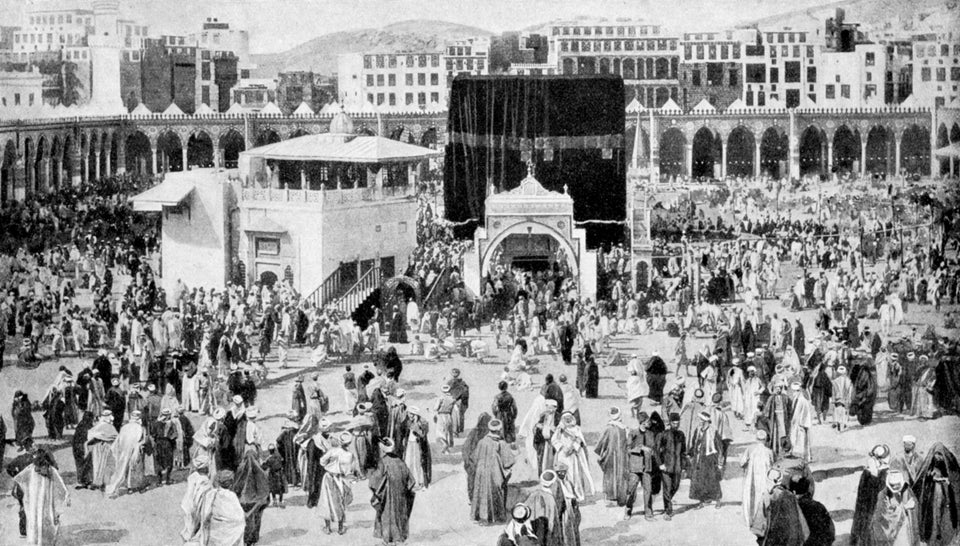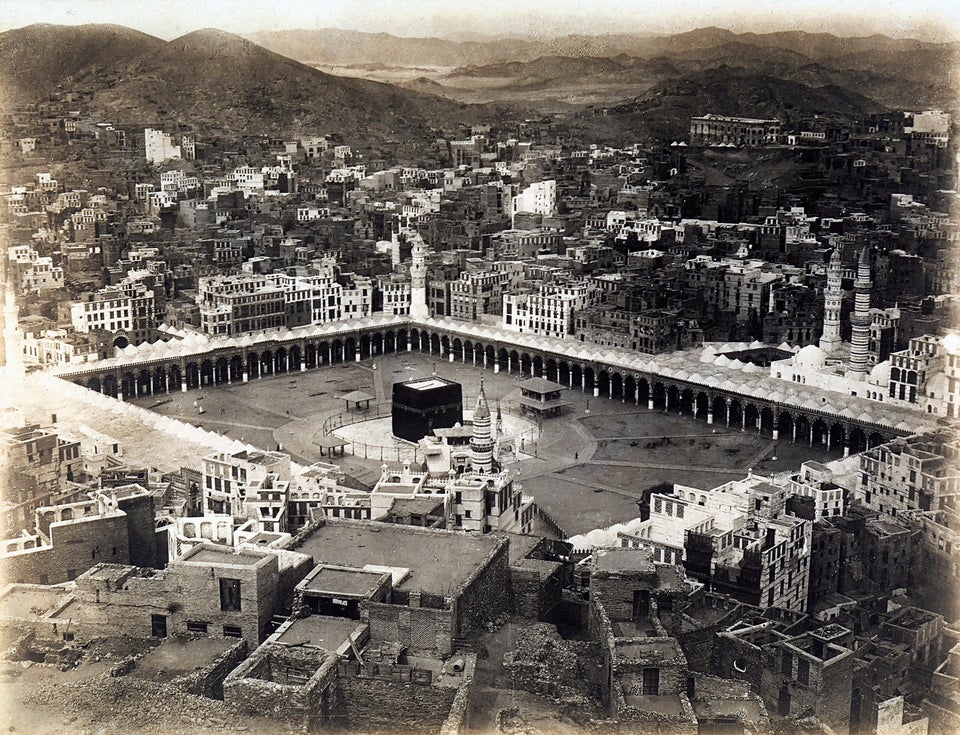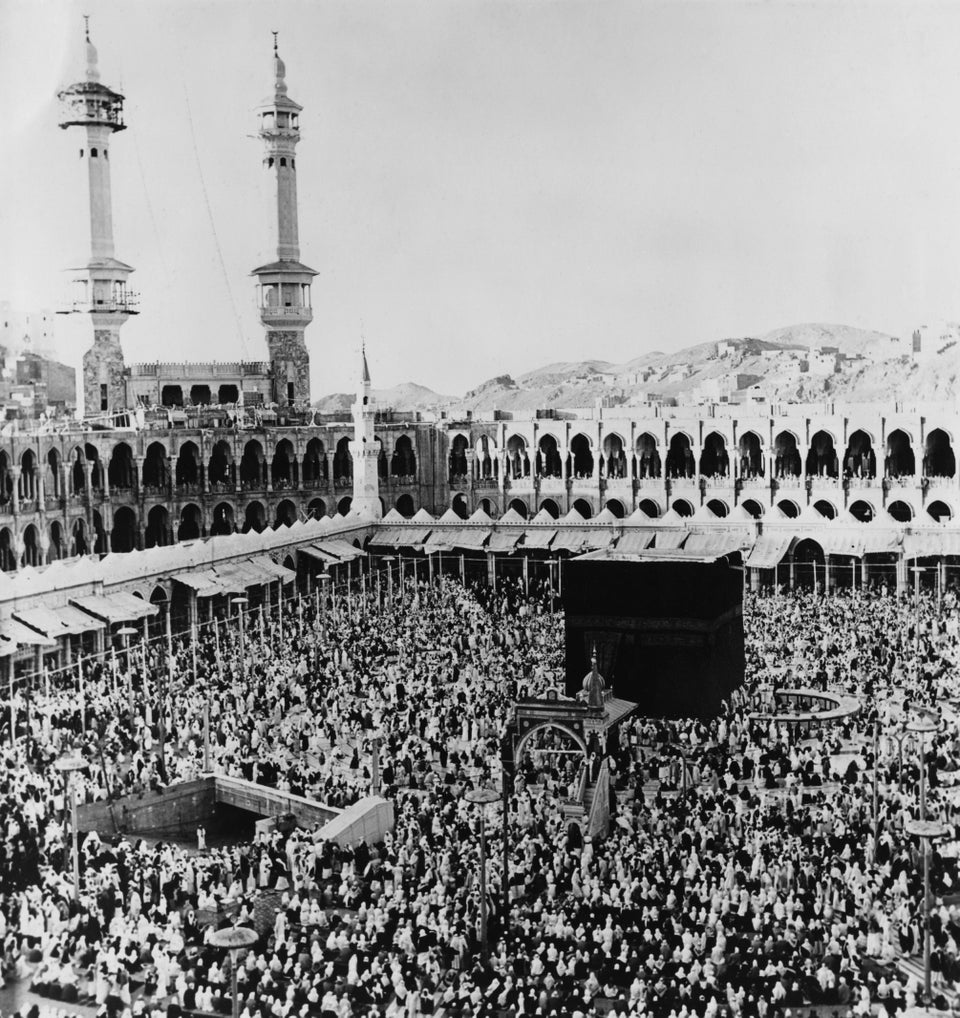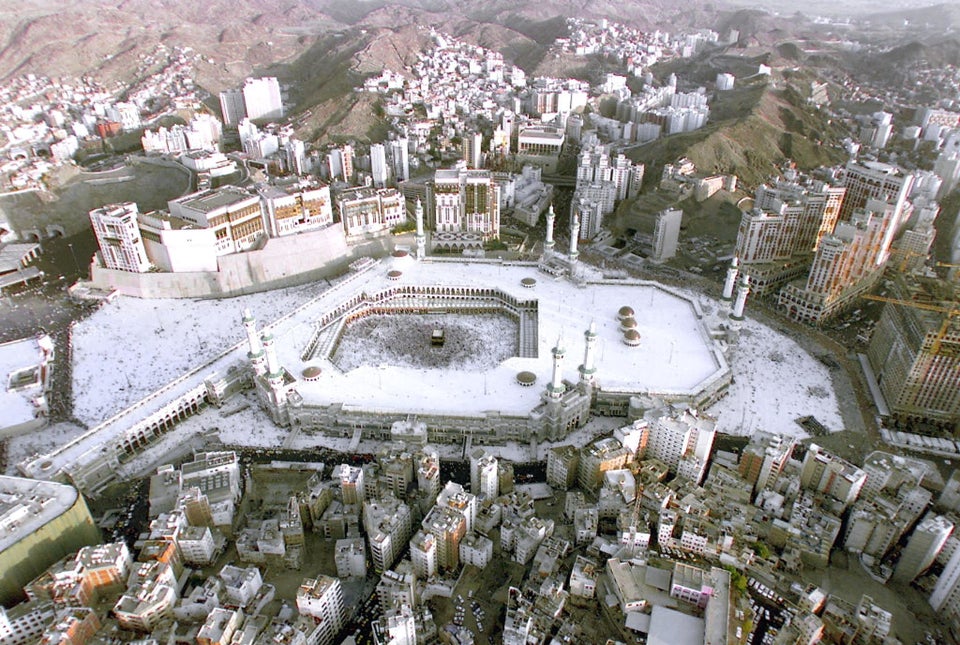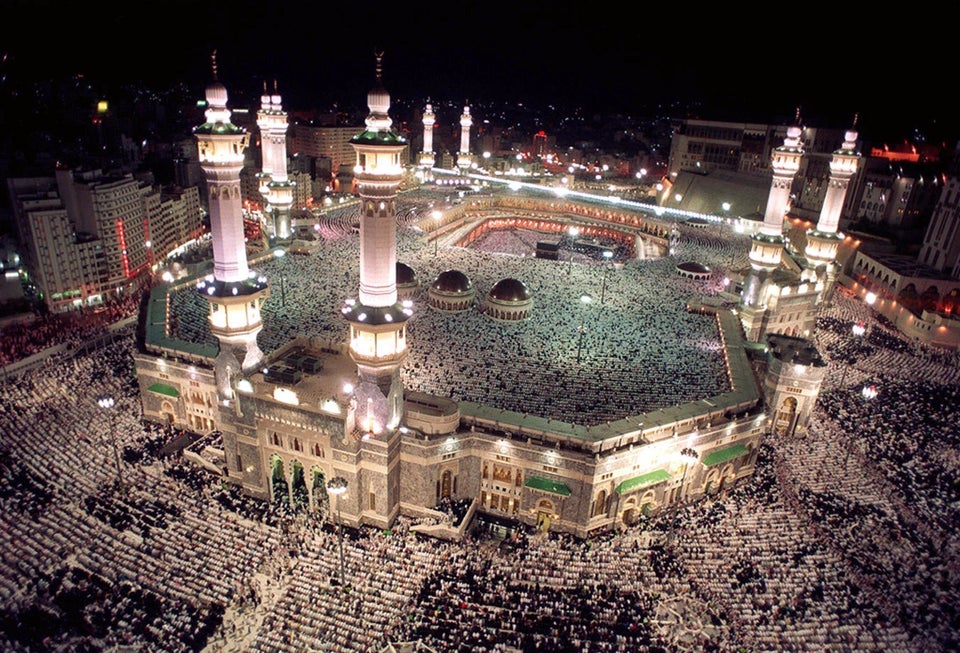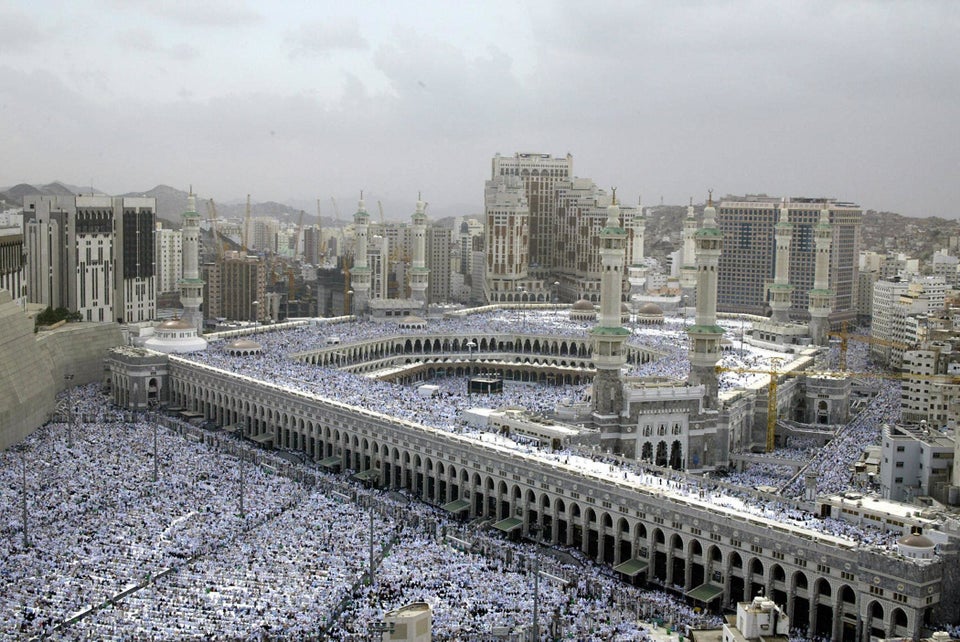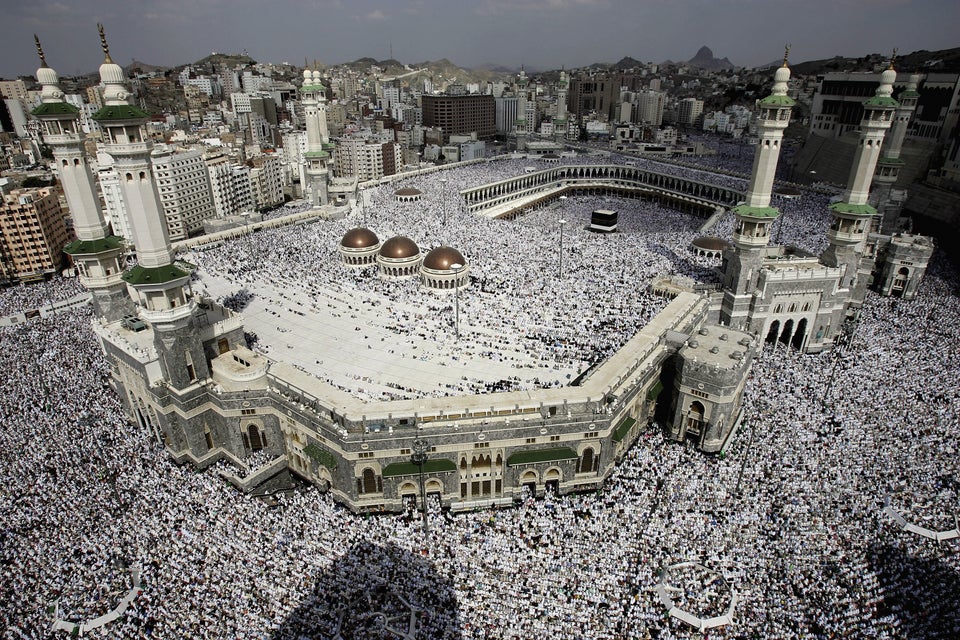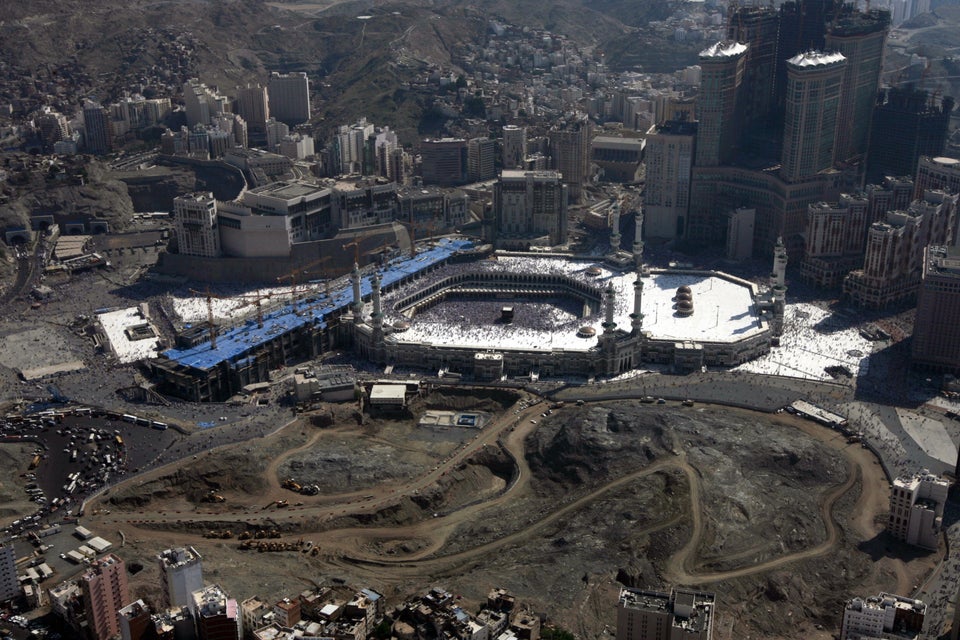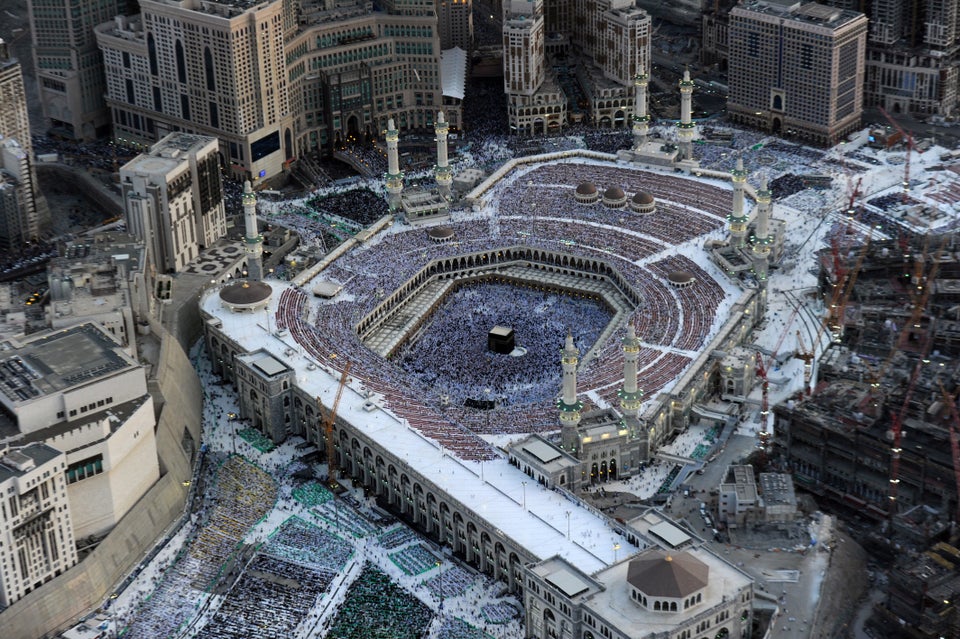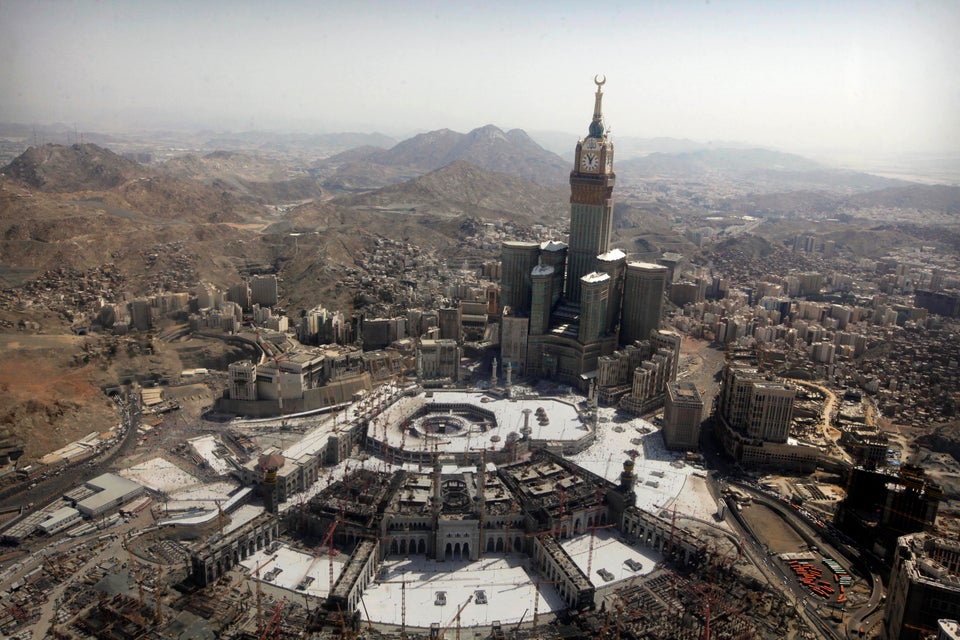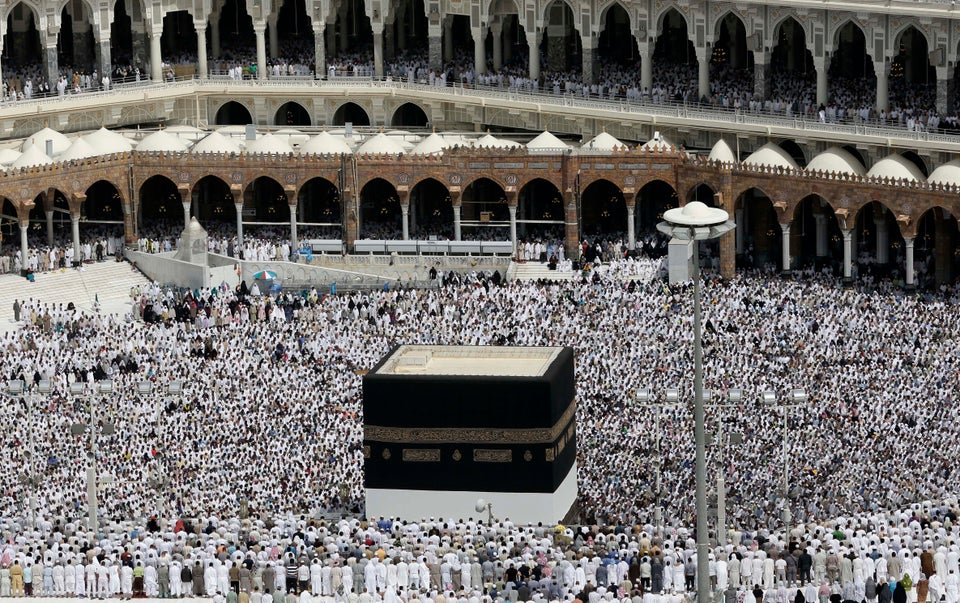What is Hajj?The annual Hajj pilgrimage is one of the world's largest gatherings, as hundreds of thousands of people flock to Mecca, Saudi Arabia, to participate in one of Islam's five pillars of faith. Muslims from all over the world will gather together for five days to pray as one community, celebrating their history and giving thanks for blessings. From the Masjid Al Haram complex to the hills of Mina, the rites include circling the Kaaba seven times and visiting sites of historical and religious importance.
When is Hajj 2014?This year's hajj is expected to fall on October 1-6, though that date depends on the sighting of the moon, as Islam follows a lunar calendar. Hajj takes place annually on the eighth day of the month of Dhul Al-Hijjah in the Muslim calendar. It's considered an obligation for devout Muslims to undertake the pilgrimage to Mecca at least once in their lifetime, if they are physically and financially able.
What's the history of Hajj?The pilgrimage to Mecca has been going on since pre-Islamic times, as Mecca's economic prosperity during the time of the Prophet Muhammad was largely due to the income from visitors.
Muslims believe that the steps of the Hajj correlate to the story of Hagar, the second wife of Abraham whom he married after Sarah was childless. After Abraham left her and her infant son, Ishmael, in the desert, she frantically ran between the hills of Safa and Marwa to look for food and water for her baby after their provisions ran out. As she prayed to God for mercy, Ishmael's heel hit the ground and the well of Zam Zam sprang forth to nourish them. When Abraham returned, he built the Kaaba with Ishmael's help.
First, pilgrims go to Miqat, the entry station to the Hajj, where they bathe, put on special clothing, and make a formal statement of intent. Next they enter the Masjid al Haram complex to do Tawaf, a rite which involves circling the Kaaba seven times while reciting prayers. After this takes place, it's encouraged to sip water from the Zam Zam well, then walk between the hills of Safa and Marwa seven times.
Next, the formal Hajj ritual begins with another declaration of intent. Pilgrims then travel to Mina on the 8th of Dhul al Hijjah and stay there until dawn prayer the next morning. Following the prayer, the faithful travel to the valley of Arafat to stand in the heat and praise God. The day concludes with travel to Muzdalifa and the gathering of small pebbles. A symbolic stoning of the devil occurs at Mina the next day, along with the animal sacrifice which is part of Eid al Adha. Male pilgrims will shave their heads after this occurs. Next, pilgrims return to Mecca to do the Tawaf again, along with the crossing between Safa and Marwa 7 times. Another trip to Mina then takes place, along with more symbolic stoning, before the faithful can return to Mecca to do a farewell Tawaf.
What are other rituals associated with Hajj?Pilgrims perform the Hajj in a state of ritual purity called ihram, which for men is physically represented by wearing simple garments made of unsewn cloth. It demonstrates the equality of humanity before God.
How many people go on Hajj?In 2012, Al Arabiya reports that 3,161,573 went on Hajj, with 1,700,000 of them coming from outside of Saudi Arabia.
What is Eid al-Adha?The Eid of the sacrifice takes place on the 10th day of Dhul Al-Hijjah, beginning in 2014 on the evening of October 4, which commemorates Abraham's willingness to sacrifice his son Ishmael in order to be totally obedient to God. Muslims sacrifice a goat or lamb in remembrance of this act of faith and give part of the meat to the poor.
Take a look at how Mecca has transformed over the last century:
Culture Club via Getty Images
Pilgrims in 1920 at the Kaaba, Mecca, Saudi Arabia, the most sacred site in the Islamic religion.
Getty Images
Mecca's great mosque, Mecca, Saudi Arabia, 1922.
Getty Images
Circa 1935: Aerial view of the Mecca with the porticoes which surround the Ka'bah.
Getty Images
The Kaaba in the centre of the Masjid al-Haram in Mecca, Saudi Arabia, March 21, 1967.
Keystone via Getty Images
The Kaaba in the centre of the Masjid al-Haram in Mecca, Saudi Arabia, circa 1979.
STR via Getty Images
A picture dated May 1988 shows Muslim pilgrims during the Hajj in Mecca.
MARWAN NAAMANI via Getty Images
Aerial view of the holy Kaaba in the holy city of Mecca March 17, 2000.
MAHMOUD MAHMOUD/AFP/Getty Images
Hundreds of thousands of Muslim pilgrims throng Mecca's Grand Mosque, Islam's holiest shrine, late on Dec. 11, 2001, to mark the 27th night of the holy fasting month of Ramadan, known as Lailat al-Qadr.
AWAD AWAD via Getty Images
Muslims pray on Jan. 23, 2004, at the Grand Mosque in the holy city of Mecca ahead of the hajj, which begins on Jan. 30.
Abid Katib via Getty Images
Muslim pilgrims pray around the holist Al-Ka'aba mosque Jan. 14, 2005, in Mecca.
KHALED DESOUKI via Getty Images
An aerial view shows the Grand Mosque, Islam's holiest site, amid booming construction in the Saudi city of Mecca on Dec. 9, 2008.
Getty Images
A picture shows the Mecca Royal Clock Tower hotel complex, under construction in the holy Saudi city of Mecca on April 13, 2010.
Amer Hilabi / AFP / Getty Images
An aerial view shows Muslim pilgrims walking around the Kaaba in the Grand Mosque of the holy city of Mecca on Aug. 6, 2012.
ASSOCIATED PRESS
The tallest clock tower in the world with the world's largest clock face at the Abraj Al-Bait Towers overlooks the Grand Mosque and its expansion in Mecca, Saudi Arabia, Wednesday, Oct. 16, 2013.
Support HuffPost
Our 2024 Coverage Needs You
Your Loyalty Means The World To Us
At HuffPost, we believe that everyone needs high-quality journalism, but we understand that not everyone can afford to pay for expensive news subscriptions. That is why we are committed to providing deeply reported, carefully fact-checked news that is freely accessible to everyone.
Whether you come to HuffPost for updates on the 2024 presidential race, hard-hitting investigations into critical issues facing our country today, or trending stories that make you laugh, we appreciate you. The truth is, news costs money to produce, and we are proud that we have never put our stories behind an expensive paywall.
Would you join us to help keep our stories free for all? Your contribution of as little as $2 will go a long way.
Can't afford to donate? Support HuffPost by creating a free account and log in while you read.
As Americans head to the polls in 2024, the very future of our country is at stake. At HuffPost, we believe that a free press is critical to creating well-informed voters. That's why our journalism is free for everyone, even though other newsrooms retreat behind expensive paywalls.
Our journalists will continue to cover the twists and turns during this historic presidential election. With your help, we'll bring you hard-hitting investigations, well-researched analysis and timely takes you can't find elsewhere. Reporting in this current political climate is a responsibility we do not take lightly, and we thank you for your support.
Contribute as little as $2 to keep our news free for all.
Can't afford to donate? Support HuffPost by creating a free account and log in while you read.
Dear HuffPost Reader
Thank you for your past contribution to HuffPost. We are sincerely grateful for readers like you who help us ensure that we can keep our journalism free for everyone.
The stakes are high this year, and our 2024 coverage could use continued support. Would you consider becoming a regular HuffPost contributor?
Dear HuffPost Reader
Thank you for your past contribution to HuffPost. We are sincerely grateful for readers like you who help us ensure that we can keep our journalism free for everyone.
The stakes are high this year, and our 2024 coverage could use continued support. If circumstances have changed since you last contributed, we hope you’ll consider contributing to HuffPost once more.
Already contributed? Log in to hide these messages.

